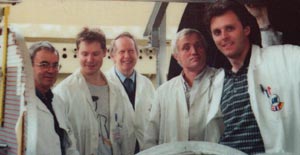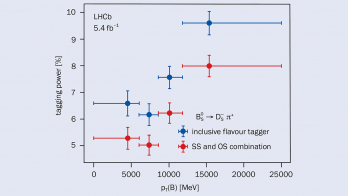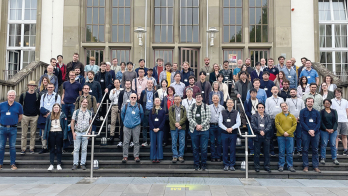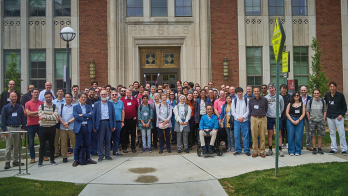An experiment at the Institut Laue Langevin (ILL), Grenoble, has produced a new, tighter limit on the electric-dipole moment (EDM) of the neutron. This result has a high potential impact for theories beyond the Standard Model that attempt to explain the origin of CP violation and hence the baryon asymmetry of the universe.

One way to test theories likely to explain the matter-antimatter asymmetry that characterizes our universe is to study the corresponding asymmetry in sub-atomic particles, by looking for slight distortions in their charge distributions. The existence of such an EDM in the neutron, and in other particles, would violate time-reversal and hence CP symmetry. While the Standard Model predicts an immeasurably small neutron EDM and a baryon asymmetry that is far too modest, theories that go beyond it almost invariably predict values for both that are many orders of magnitude larger. Accurate measurements of EDMs thus provide strong constraints on such theories.
The neutron EDM has been sought for more than 50 years, and many candidate theories have been eliminated along the way. Experiments are now sensitive enough to test currently popular theories such as supersymmetry. The experiment that has recently been carried out at ILL by a collaboration from the University of Sussex, the Rutherford Appleton Laboratory and ILL, has produced an upper limit on the absolute value of the neutron EDM of 3 × 10-26 ecm (Baker et al. 2006). This represents an improvement of a factor of two over its intermediate result and almost a factor of four with respect to earlier measurements (Harris et al. 1999).
The experiment used ultracold neutrons produced at the high-flux ILL reactor. These neutrons were stored in batches in a trap permeated by uniform electric and magnetic fields. Spurious signals from magnetic-field fluctuations were reduced to insignificance by the use of a cohabiting atomic-mercury magnetometer (Green et al. 1998). The ratios of neutron to mercury-atom precession frequencies were measured; shifts in this ratio that are proportional to the applied electric field may in principle be interpreted as EDM signals.
The collaboration, which has now expanded to include Oxford University and the University of Kure in Japan, is constructing a new version of the experiment in which the neutron trap will be submerged in a bath of liquid helium, half a degree above absolute zero. The increase in neutron density and electric field strength that this will allow should yield a hundredfold increase in sensitivity.
Further reading
C A Baker et al. 2006 http://arXiv.org/abs/hep-ex/0602020, submitted to Phys. Rev. Lett.
P G Harris et al. 1999 Phys. Rev. Lett. 82 904.
K Green et al. 1998 Nuc. Instr. Meth. A 404 381.







